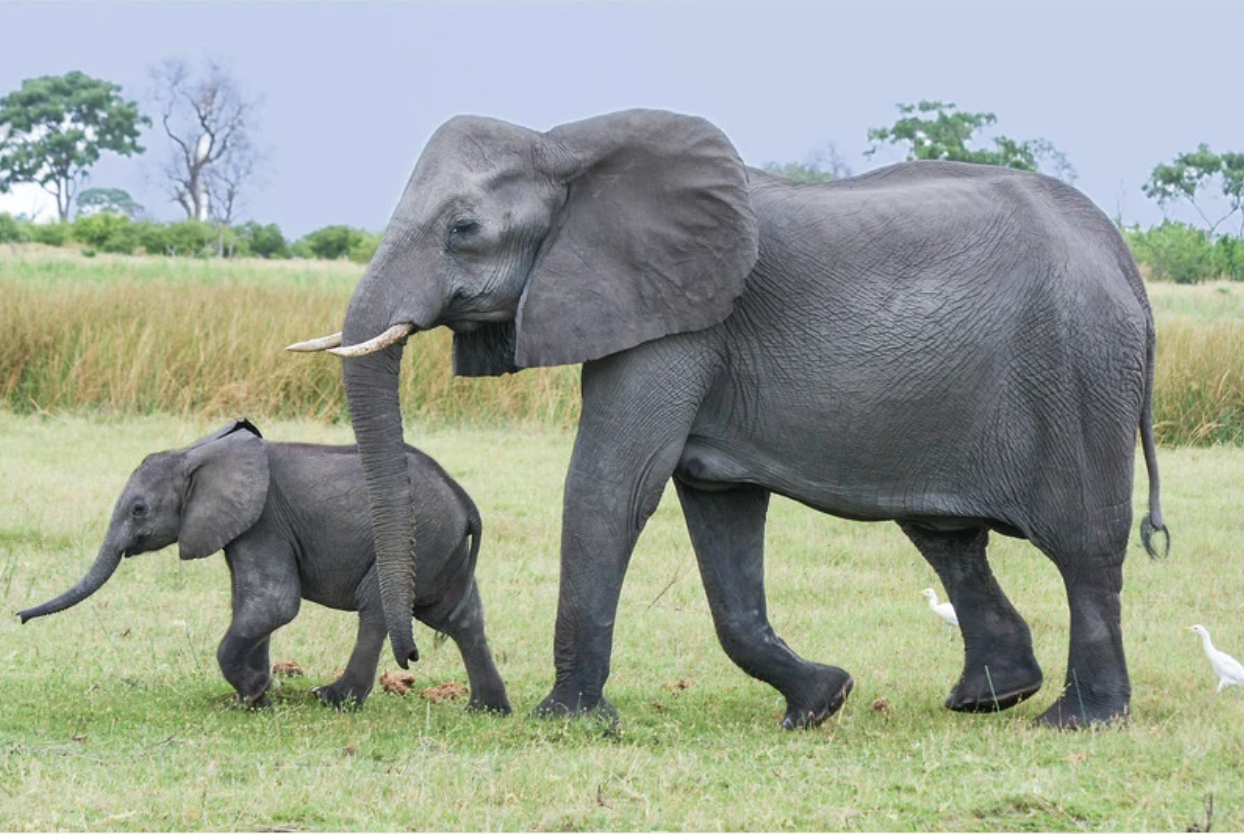On our way back from Dehradun last summer, we spotted an elephant standing on the banks of Ganga, spewing water all over his body using its trunk, perhaps trying to beat the heat. Due to hilly terrains, elephants in this region bend their forelegs and slide down the hill to get to the river. According to local eyewitnesses, the sight is both exciting and frightening. Located in the northern part of India, Chidiyapur and its surrounding area are known for wild elephants. People avoid travelling after sunset for fear of encountering elephants and leopards. Unfortunately, we have disrupted their pathways by laying down national highway roads and railway crossings and clearing up dense forests for convenience.

Elephants are the world’s largest land animals, with the males reaching up to 10 – 11 ft tall and weighing 5.7 – 7.6 short tons. They belong to the family Elephantidae and are broadly divided into two species: African and Asian (Elephas maximus). African elephants are further subdivided into African bush elephants (Loxodonta Africana) and African forest elephants (Loxodonta cyclotis). An elephant’s large head can endure the weight of the tusk. Its large ear flaps or pinnae help release body heat. Living in the hottest regions, African bush elephants have the largest ear flaps so that more heat can be released through their capillaries. Elephants have 26 teeth: 2 tusks, 12 deciduous premolars and 12 molars. Their teeth get replaced at least six times throughout their lives. Their nose or trunk is one of the most fascinating and unusual features.
[1] An elephant uses its trunk as a hand, an extra foot, a tool for gathering food, water, dust, digging, and a signalling device. Their trunks can hold 2.5 gallons of water, but they don’t drink water from their trunk; instead, they use it to hold water and put it into their mouths.[2] An elephant's trunk comprises 40,000 packed muscle fibres, does not have skeletal support, and works as a wonderful tool with exact precision.
A fascinating analogy can be a robotic trunk invented by the German company Festo. The Bionic Handling Assistant can be used for holding objects, moving them, or putting them in place. It has three finger-like grippers to pick up and place items from one place to another. The bionic handling assistant is supposed to be safer for sensitive items because it’s not made of metal and uses air pressure instead of geared motors as its actuation system.
[3] Hence, the robotic trunk was designed using a hollow plastic mould that could be filled with compressed air for desired movements. The chambers inside the robotic trunk use sensors to guide the movement.
[4] It took hundreds of years of experimentation and knowledge to develop artificial intelligence and robotics, with Al Jazari, a 12th Century Muslim inventor, pioneering the field. Engineers can now make aeroplanes inspired by birds, drones, robots that mimic us, and bionic handling devices that copy animals. Does it not make you gasp in awe of the technology? A robotic trunk did not make itself. A team of designers and engineers is behind its development. [1] “Elephants”, Wikipedia. Retrieved on March 15, 2022, from https://en.wikipedia.org/wiki/Elephant [2] “25 Things You Might Not Know About Elephants”, International Elephant Foundation.Org. retrieved on March 15, 2022, from 25 Things You Might Not Know About Elephants – International Elephant Foundation (elephantconservation.org) [3] Retrieved from https://sites.psu.edu/alqudaihyblog/blogs/personal-interests/robotic-arm-inspired-by-elephant-trunk/ [4] “Robotic Arm Inspired by the Elephant Trunk”. Retrieved from https://asknature.org/innovation/flexible-gripper-inspired-by-the-elephant-trunk/
Similarly, do you think an elephant knew on its own that it needed a trunk as an essential organ of its body, so it evolved it over time? Just like it is illogical to say that metal and plastic combine under a random accident or chance to become a robotic trunk, it is even more absurd to assume that dust and dirt turn into living cells under natural laws or random forces to develop a multifunctional elephant’s trunk. So, shouldn’t we be questioning who the Maker of elephants is? How knowledgeable and wise does that Maker have to be to know what is appropriate for an elephant? Is it not logical to say that the one who has created an elephant must have absolute knowledge, power, wisdom, and will?
All these questions indicate one answer: the presence of an absolute Powerful Being who has brought such a majestic creature into existence. The scientific knowledge about elephants points to the Creator (Al-Khāliq), the Best of Fashioners (Al-Muṣawwir), for He knows what suits a specific creature best. An elephant reflects its Creator, the Strong (Al-Qawyy) and the Most Majestic (Al-Jaleel). The fact that an elephant relies upon plants and trees for food, sun, air, water, etc., to survive proves its interconnectedness with other creatures. It highlights that the One who created an elephant has also made other living and non-living things useful for elephants. This interdependence and interconnectedness indicate the presence of the One Creator only.
Imagine how boring the world would have been without elephants. They are eco-friendly as they are responsible for 35% of seed germination.[1] They are indeed one of God’s bounties. But have you ever wondered that God had given us such an amazing creature, just like every other blessing, without even asking for it? Is this not a sign of His endless Mercy? What does He want in return for this precious gift? All that He asks in return is to reflect (fikr) upon His creation, remember (dhikr) Him and be grateful (shukr) for everything. By remembering Him, reflecting on His creation, and thanking Him, we become kinder and more compassionate towards our fellow creatures because His consciousness inculcates a sense of humility and impotence within us. Such a majestic and strong creation of God teaches us resilience and perseverance. Elephants are known to form family structures and exhibit survival skills, leading us to learn suitable moral lessons about maintaining family ties.[2] [1] Retrieved https://clickatree.com/en/stories/fun-elephant-facts [2] Ibid.